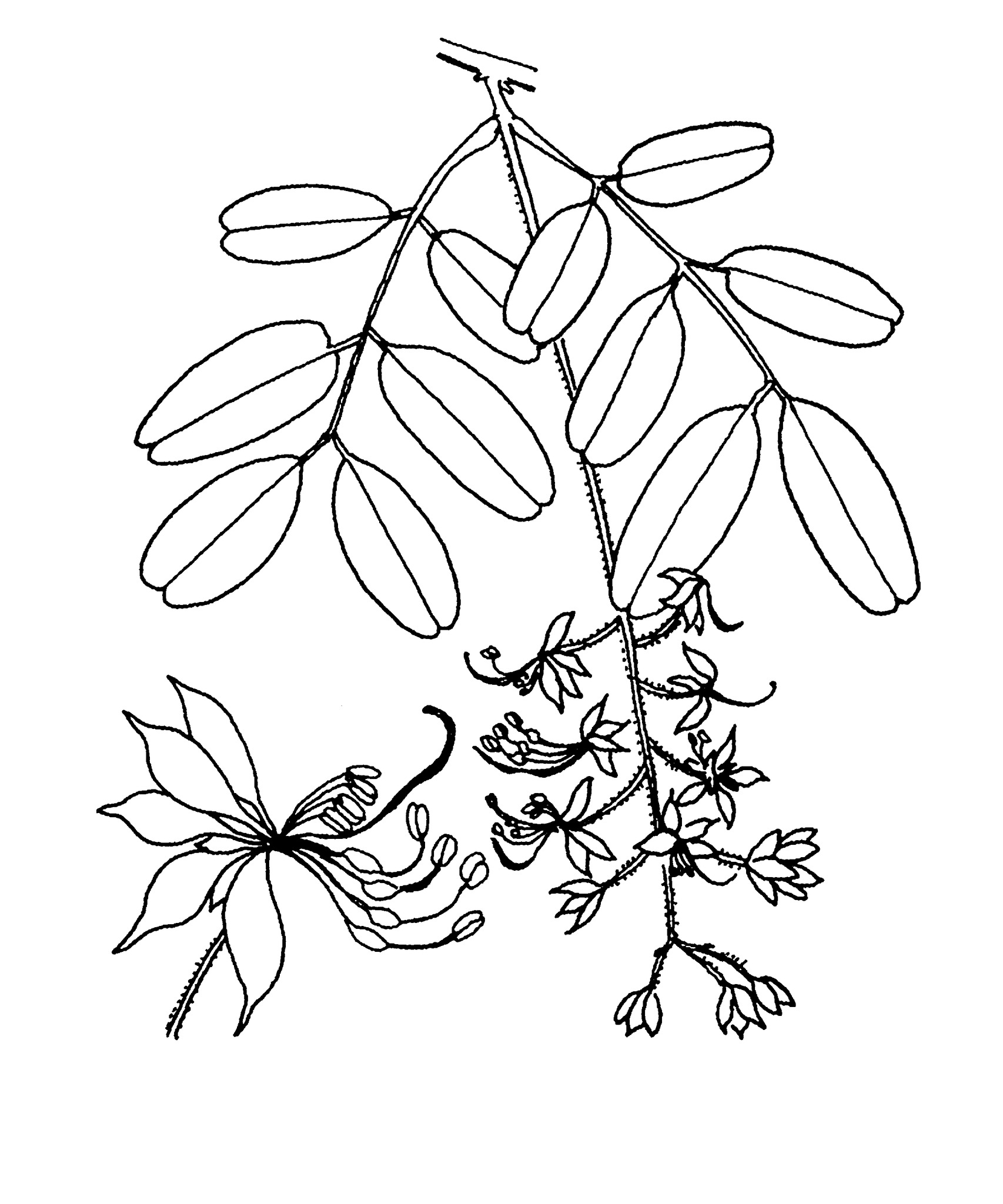
Greco-Latin word, from the Hebrew qase’ah, used to denote a sort of cinnamon bark and also some fragrant shrubs.
Small thornless trees or small shrubs. Leaves alternate, compound, without a terminal leaflet. Leaflets in 3-25 pairs, elliptic to obovate and without glands. Flower clusters terminal, erect or pendulous. Flowers with 5 petals, mostly yellow but occasionally pink or reddish. Stamens 10, the 3 upper ones sterile, the 4 lateral ones with short filaments and basal pores, the 3 lower ones fertile with pores at both ends and filaments elongated and s-shaped, often with a fleshy node in the middle. Fruit pods cylindrical, indehiscent and woody with transverse partitions between the seeds.
As a result of revision, most plants in Australia formerly in the genus Cassia are now placed in the genus Senna.
Cassia fistula L., Golden Shower Tree (Pudding-pipe Tree), from India is used as a street tree throughout the tropics; it has remarkable pods 30-60 cm long and a wonderful flower display in summer and autumn.
About 30 species from tropical America, Africa, Asia and Australia (2 species endemic).
Seed.
The pith in the pods of C. fistula has medicinal uses.
Stamens with S-shaped filaments which often have a fleshy node in the middle; the similar genus Senna has the filaments of all stamens straight or curved (not S-shaped), not more than twice as long as the anthers or, if so, the anthers opening by pores.
Irwin & Rogers (1967, 1977), Gordon-Gray & Schorn (1975), Irwin & Barneby (1982), Randell (1988, 1989, 1990).
Source: (2002). Caesalpiniaceae. In: . Horticultural Flora of South-eastern Australia. Volume 3. Flowering plants. Dicotyledons. Part 2. The identification of garden and cultivated plants. University of New South Wales Press.
